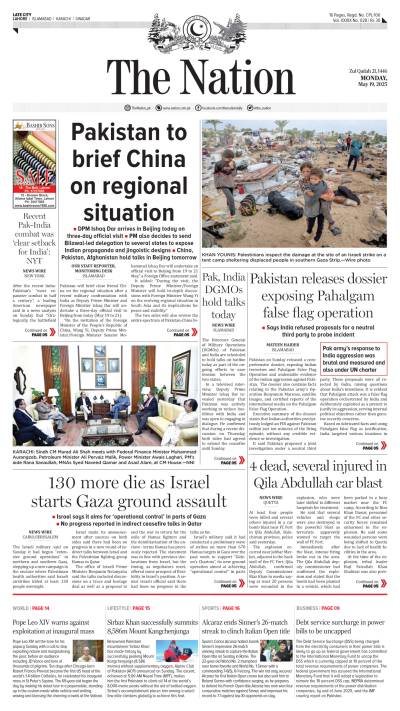The political landscape of contemporary India reminisces about the post-independence popularity of Nehru when he won two consecutive terms in office. PM Modi is poised to get ahead of the tall figure in Indian politics if he secures the third term. There is a lot of hue and cry in the media regarding the seemingly untenable claim of BJP securing more than four hundred seats in the upcoming Lok Sabha election. Whether BJP achieves its target or not, the pervasive nature of the claim has made every other issue irrelevant from the national discourse that the country faces ranging from ubiquitous poverty to dipping standards of living. While Modi is basking in the glory of past victories, he’s unable to realize the changing dynamics of local politics. A lot has changed since 2019 – around 189 million new voters will cast their vote for the first time, and the recent state elections have created possible hurdles for the smooth sailing of the BJP in the upcoming elections especially in the south.
In the bigger scheme of things, the southern states present a unique challenge for the BJP. Traditionally, the BJP’s stronghold has been in the north-western regions of the country, popularly known as Hindi Heartland, with its influence gradually expanding. However, winning a significant number of Lok Sabha seats out of 130 in the southern states remains an uphill battle for the party. As a matter of fact, the BJP has failed to secure more than fifty seats out of the nearly two hundred Lok Sabha seats from states that were not ruled by the BJP. Interestingly enough, apart from the political dynamics, high literacy rates in some states are considered the primary reason for the failure of the BJP; even the BJP’s first MLA from Kerala, Rajagopal attested to this theory as one of the few reasons for BJP failure in the south. However, the BJP has been making concerted efforts to strengthen its presence in the south where big states like Tamil Nadu and Kerala among others offer a tough time to its overtures of scoring electoral victories.
In the south the electoral battles usually involve Congress and the Left parties, therefore, the BJP faces formidable obstacles with near zero chances of electoral breakthrough. While it may not secure a substantial number of seats in the South, it has the means to secure a substantial percentage of popular votes. In 2019, even though it won no seats from Kerala, it secured 12 percent of the total vote cast. Similarly, in Tamil Nadu, BJP contested on five seats and stood runner-up on all five securing over one and a half million votes.
Surprisingly, keeping the current alignment in mind, the BJP-led NDA and Congress-led INDIA secured an equal number of seats each in the first phase of Lok Sabha elections in 2019, with DMK, a regional party and then an ally of Congress, acting as a balancer, outmaneuvered BJP in Tamil Nadu. However, the tables turned in the states where the strong presence of the BJP was felt, it was there that the Congress faced a disastrous exit from the political landscape.
There are reports of low turnout in the first phase of the election which has annoyed the BJP leaders. Curiously enough, with all the pomp of promoting Modi as a messiah and the countless welfare schemes, voters in key regions have turned to use their ballot at fewer numbers than in the 2019 election. This has sent a chilling wave across the BJP leadership, in response, they have decided to engage the voters, especially from the Rajput-dominated western UP, a stronghold of BJP.
In contrast, the Congress has been redefining its electoral strategy, especially in states like Telangana, where it recently scored victory. The party’s six guarantees resonated with voters, leading to a significant electoral victory in the state elections. However, despite regional victories, the Congress faces a daunting challenge in the form of the National Democratic Alliance, led by the BJP. The claim of potentially securing 400 seats in the Lok Sabha by the NDA has sent ripples through the opposition camp, including the Congress, which finds itself in the role of the main opposition party.
Ironically, the opposition still presents a picture of dismay evident from the lackluster campaign before the elections. On the contrary, the BJP exudes activism and formidable organizational prowess, while the opposition appears fragmented, weak, and, in some cases, inactive. This stark asymmetry in political mobilization has left many doubting the impact of the opposition’s resistance to the BJP’s growing influence.
To carve a niche for itself as a credible opposition and a progressive political party, Congress must engage and connect with the electorate at the local level, articulate a clear and compelling vision for governance and it must wake up to the reality of harnessing the power of social media and technology to engage with voters, especially the youth. While the BJP’s dominance in Indian politics is undeniable, the Congress and the broader opposition camp are not without a recourse. As the political landscape continues to evolve, the Congress must seize the moment and chart a course that resonates with the aspirations of the Indian electorate.
Muhammad Abdullah
The writer is an Independent Researcher and writer. He can be contacted at abdislamtoru@gmail.com





